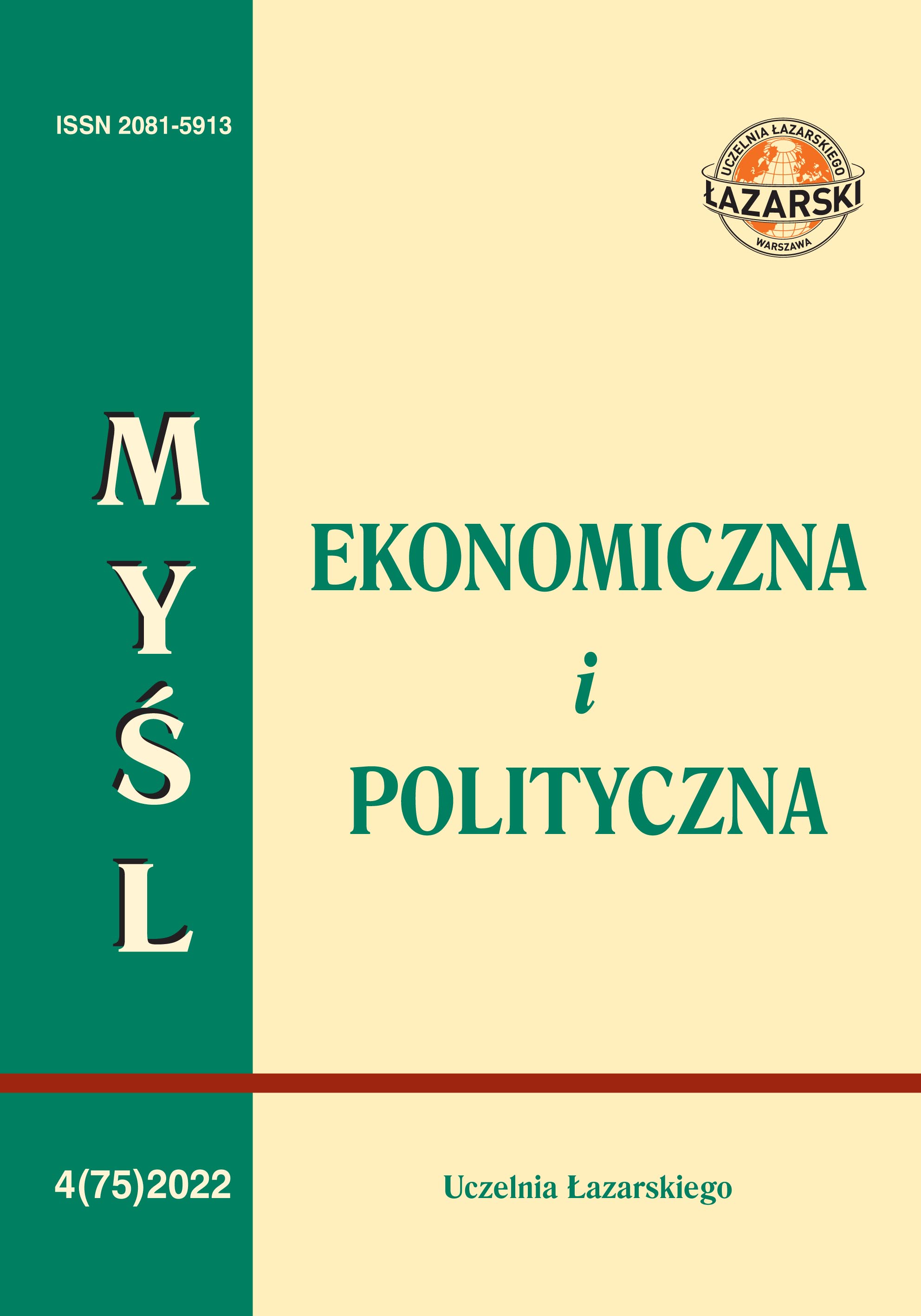Stabilization policy of central banks during economic crises: A comparative analysis of the monetary policy of the European Central Bank and the US Federal Reserve System
Keywords:
central bank, conventional and unconventional instruments of monetary policy, economic crisis, stabilization policy of the central bankAbstract
The aim of the paper is to analyze and evaluate the stabilization activities carried out by the two most powerful central banks in the world: the US Federal Reserve System (FED) and the European Central Bank (ECB) in response to the two largest economic crises of recent years. A discussion was launched on the effectiveness of the monetary policy pursued by the FED and the ECB during the financial crisis of 2007–2008 and the economic crisis caused by the COVID-19 pandemic. Differences between the actions of the analyzed central banks during both crises were indicated and assessed. The results of the analyzes indicate that the monetary policy conducted at the national level by both central banks played a key role in mitigating the socio-economic effects of both economic crises. Both the FED and the ECB showed high efficiency in the process of combating the effects of crises, but they used different monetary tools. The actions taken by the FED during the financial crisis were more invasive than those taken by the ECB, especially in large-scale financial asset purchases. Generally, however, both central banks largely supported the financial system and the real economy of their economies. During the pandemic crisis, the situation changed and in 2020 both central banks actively used their ability to influence interest rates by purchasing financial assets. Again, however, the ECB was more focused on offering credit facilities to businesses than its US counterpart. In terms of returning to the path of economic growth and achieving the target inflation level, the US economy significantly outperformed the euro area during both the financial crisis and the COVID-19 crisis, which may indicate a higher effectiveness of the FED’s stabilization measures compared to the ECB.
Downloads
Published
Issue
Section
License

This work is licensed under a Creative Commons Attribution-NonCommercial-ShareAlike 4.0 International License.

